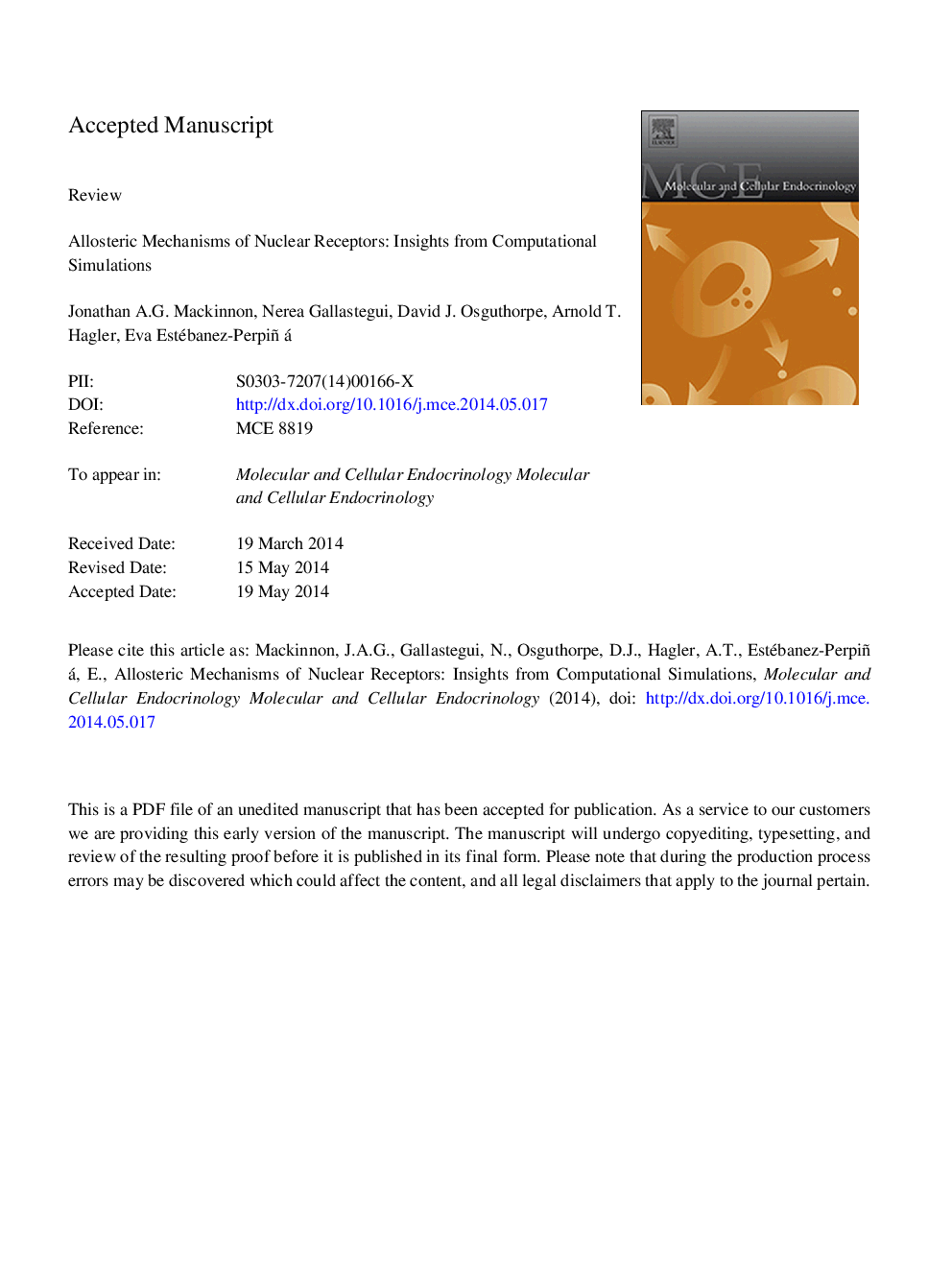| Article ID | Journal | Published Year | Pages | File Type |
|---|---|---|---|---|
| 8477144 | Molecular and Cellular Endocrinology | 2014 | 37 Pages |
Abstract
The traditional structural view of allostery defines this key regulatory mechanism as the ability of one conformational event (allosteric site) to initiate another in a separate location (active site). In recent years computational simulations conducted to understand how this phenomenon occurs in nuclear receptors (NRs) has gained significant traction. These results have yield insights into allosteric changes and communication mechanisms that underpin ligand binding, coactivator binding site formation, post-translational modifications, and oncogenic mutations. Moreover, substantial efforts have been made in understanding the dynamic processes involved in ligand binding and coregulator recruitment to different NR conformations in order to predict cell/tissue-selective pharmacological outcomes of drugs. They also have improved the accuracy of in silico screening protocols so that nowadays they are becoming part of optimisation protocols for novel therapeutics. Here we summarise the important contributions that computational simulations have made towards understanding the structure/function relationships of NRs and how these can be exploited for rational drug design.
Keywords
LBPRARVDRHDXNTDRXRαRetinoid X Receptor αH12PPARγAF-2VDSRMSDLBDDBDREMDPTMSAXSnuclear magnetic resonanceAllosteryStructural couplingpost-translational modificationactivation function 2Hydrogen/deuterium exchangeNMRLigand binding pocketN-terminal domainDNA-Binding Domainligand binding domainMolecular dynamicsReplica exchange molecular dynamicsroot mean squared deviationMolecular dynamic simulationsLigand bindingcoregulatorswild typesmall angle X-ray ScatteringAndrogen ReceptorEstrogen receptorRetinoic acid receptorperoxisome proliferator activated receptor γglucocorticoid receptorNuclear receptornuclear receptors
Related Topics
Life Sciences
Biochemistry, Genetics and Molecular Biology
Cell Biology
Authors
Jonathan A.G. Mackinnon, Nerea Gallastegui, David J. Osguthorpe, Arnold T. Hagler, Eva Estébanez-Perpiñá,
